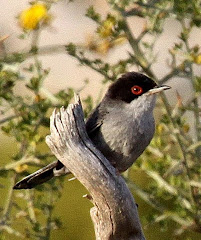The Great Grey Shrike was still on the fell and seen (always at quite a distance) by several watchers from near the convenient lay-by on the B6478. When it was first sighted over a month ago it favoured a territory about 1 km to the east but for three weeks now it seems to have preferred this limited area.
.jpg)
If not initially visible it will usually soon appear at one of its look-out points on the power-lines, so patience is generally rewarded with a sighting. Early this morning it was reported to be singing/calling and someone else saw it take a vole and hang it in a nearby tree for a future meal. The bird is very active and from its many perches incessantly turns its head from side to side watching for prey movement below. It never seems to rest, so perhaps food is hard to come by? Unfortunately, it will probably be gone fairly soon now.
.jpg)
.jpg)
.jpg)
.jpg)
.jpg)
.jpg)
.jpg)
.jpg)
.jpg)
.jpg)
.jpg)
.jpg)
.jpg)
.jpg)
.jpg)
.jpg)
.jpg)
.jpg)
.jpg)
.jpg)
.jpg)
.jpg)
.jpg)
.jpg)
.jpg)
.jpg)
.jpg)
.jpg)
.jpg)

.jpg)
.jpg)
.jpg)
.jpg)
.jpg)
.jpg)
.jpg)
.jpg)
.jpg)

.jpg)
.jpg)
.jpg)
.jpg)
.jpg)
.jpg)
.jpg)
.jpg)
.jpg)



